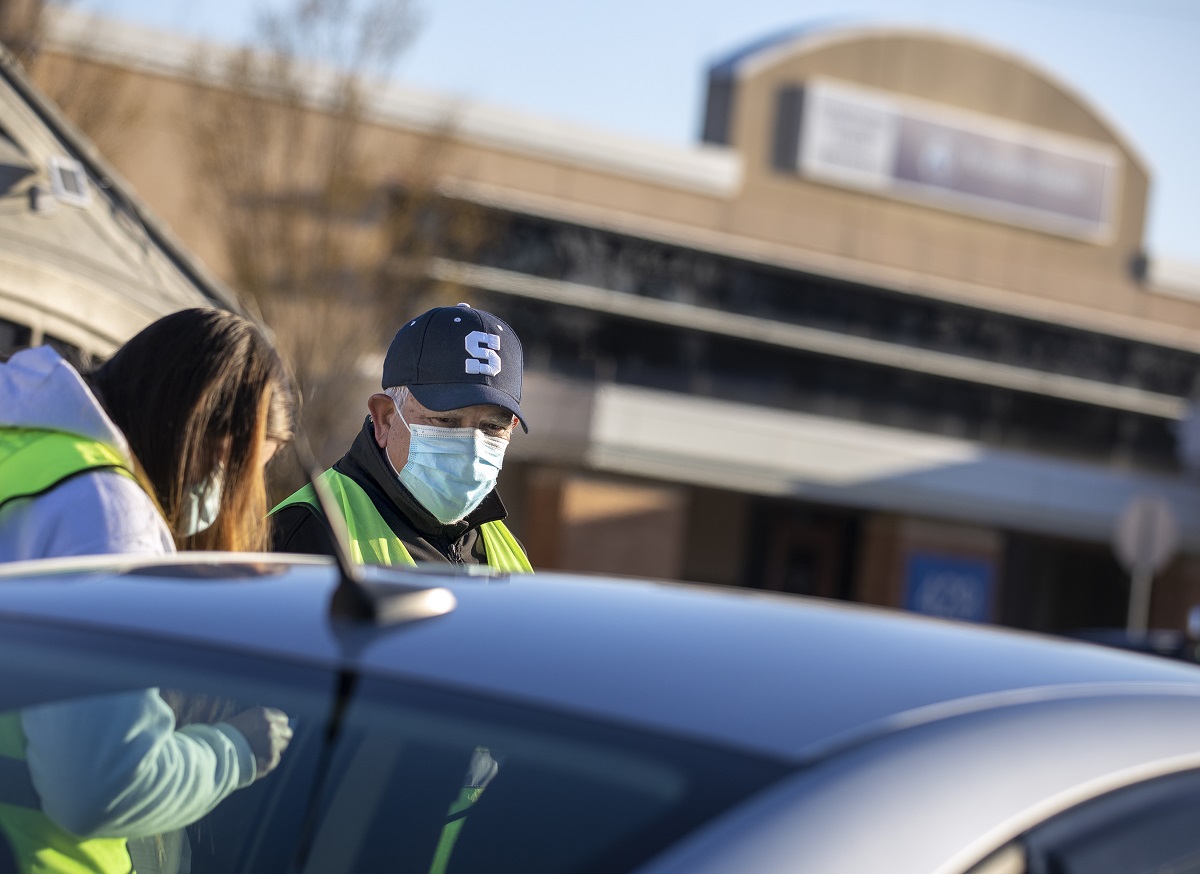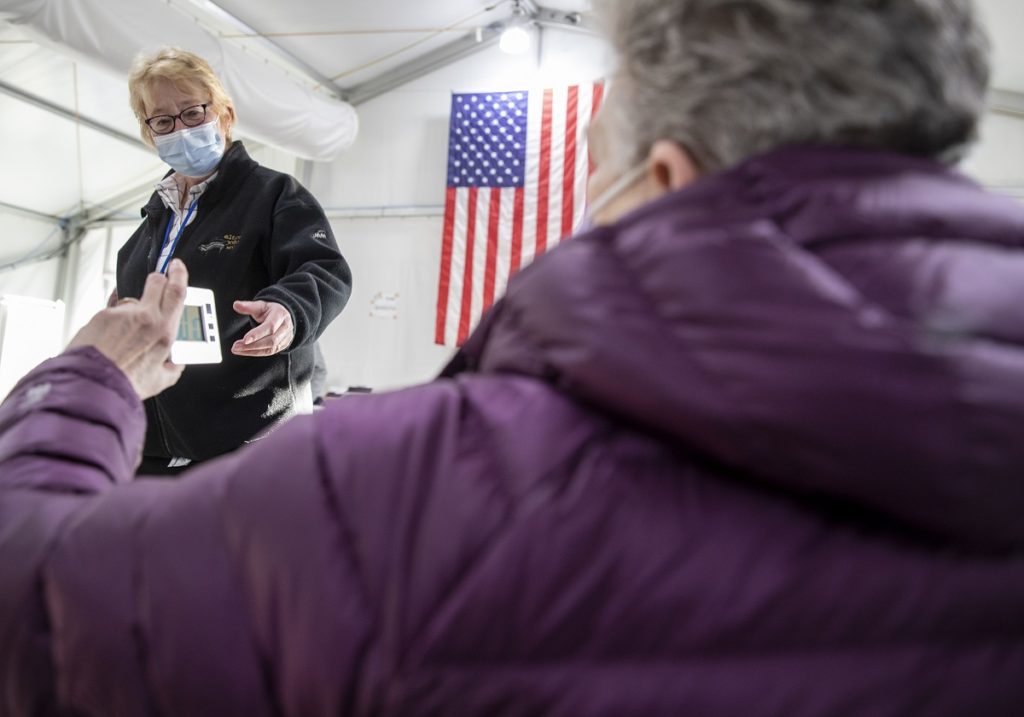Out of retirement: Former Penn State Health employees come back to help colleagues set up vaccine sites

Jim Rohacek always liked to get his hands dirty.
The desk part of his job as an administrator at Penn State Health Milton S. Hershey Medical Center was never his favorite. Rather, Rohacek, who retired in 2015, preferred working in close contact with Supply Chain personnel and the four clinical departments he helped manage. “I liked putting out fires,” he said.
And that’s why, in January, when Rohacek got the call from Penn State Health to help out with its dedicated vaccination sites, it seemed like a perfect fit. Rohacek and five other former Penn State Health managers came out of retirement to help stand up the health system’s first locations for inoculating the surrounding community, a mammoth undertaking involving dozens of their colleagues near and far.
“Even in retirement, these folks are Penn State family members,” said Dr. Chris DeFlitch, Penn State Health vice president and chief medical information officer. “So we asked if they could come back and use that experience and expertise to help the family.”
The idea to get the help of recently retired Penn State Health executives came as the health system pivoted from vaccinating its own staff to vaccinating the community. The task wasn’t small, said Jeanette Gibbs, the health system’s senior vice president of ambulatory systems, who is leading the effort.
Penn State Health leaders visited more than 50 potential sites in central Pennsylvania to find suitable locations for their temporary vaccine clinics. Logistics ranging from how to ship, store, prepare and administer a vaccine that only months earlier didn’t exist had to be hashed out. And then there was the unexpected – for example, to contend with a shortage of refrigerators and freezers, the health system’s Supply Chain had to order them before all the sites were chosen. That meant suppliers had to ship the bulky units to the Milton S. Hershey Medical Center. Later, Supply Chain staff had to rent moving vans to deliver them.
After the sites were selected, more of the unexpected lay just over the horizon. Each location has very different needs and capabilities. “We knew these sites needed our full attention,” Gibbs said. “And our current medical group leaders have other responsibilities that require their full attention. We need to continue to focus on taking care of our patients in our ambulatory practices. The vaccine sites was to be an all-hands-on-deck undertaking, and we needed all of our medical group leaders, plus the help from a few retired leaders to make sure the sites were successful.”

Wendy Hayden, left, formerly director of clinical information systems at Penn State Health, helps fine tune the flow of patients and vaccine at the dedicated vaccination site at Holy Spirit Medical Center.
So they decided to tap leaders with experience doing just that kind of work. After contacting Rohacek, DeFlitch called his colleague Wendy Hayden, who retired as director of clinical information systems in June 2019 after 23 years at Penn State Health. Both of them had developed the health system’s electronic medical record platform, which gives medical professionals instantaneous access to patient information.
Hayden jumped into the two-hour daily morning phone calls where the operational detail of the sites were planned. Once the site outside Penn State Health Holy Spirit Medical Center in Camp Hill opened on Feb. 22, a big part of her job would be fine-tuning the process.
“Our first problem came bright and early that first Monday morning,” she said. The team had planned to register patients for the second of the two required doses of the Pfizer or Moderna vaccine the moment they arrived for their appointments. They quickly discovered the application the team was using to schedule the appointments couldn’t be used for a second dose until after the first had been administered.
Hayden contacted Information Services and requested two mobile carts. Now after patients receive their shots at the Camp Hill site and are waiting the required 15 minutes to ensure they have no side effects, schedulers visit them with laptops on carts to schedule their second appointment.
In Hershey, the work has been much the same for Judy Dillon, whose most recent job was director of community health. She uses the expertise she gained in setting up flu shot clinics and handling the logistics of moving people. In just a few weeks of setting up the COVID-19 vaccination clinics, they’ve learned a lot, she said.
For Dillon, the work isn’t that far from what she’d had planned for retirement anyway. “I saw myself being very active in the community for things that I just didn’t have time for when I was working full time,” she said.
Since leaving Penn State Health, Rohacek has worked part time at Deer Valley Golf Course in Hummelstown. Until the pandemic, he worked on Fridays giving tours of Penn State College of Medicine to prospective students.
When he got the call from DeFlitch, he was planning an extended road trip to Atlanta to visit his sister. After that, he was headed for Florida. So as the team from Penn State Health hosted conference calls, Rohacek was usually behind the wheel several states away.
He returned in March and began working at the Holy Spirit dedicated vaccination site, where he splits the week with Hayden.
“My job is to troubleshoot,” he said. If the team needs help parking cars, Rohacek heads to the parking lot. Sometimes people show up who haven’t scheduled an appointment. Sometimes the system works too well, and there are 100 more people than expected.
In other words, for two days a week, Rohacek is back doing the job he used to love. Getting his hands dirty, putting out fires.
Coming out of retirement
- Judy Dillon, director of community health
- Linda Duncan, chief operational excellence officer
- Wendy Hayden, director of clinical information systems
- Jim Rohacek, administrator
- Patti Wengert, vice president of nursing procedural care
- Whitney Almquist, practice manager
If you're having trouble accessing this content, or would like it in another format, please email Penn State Health Marketing & Communications.
